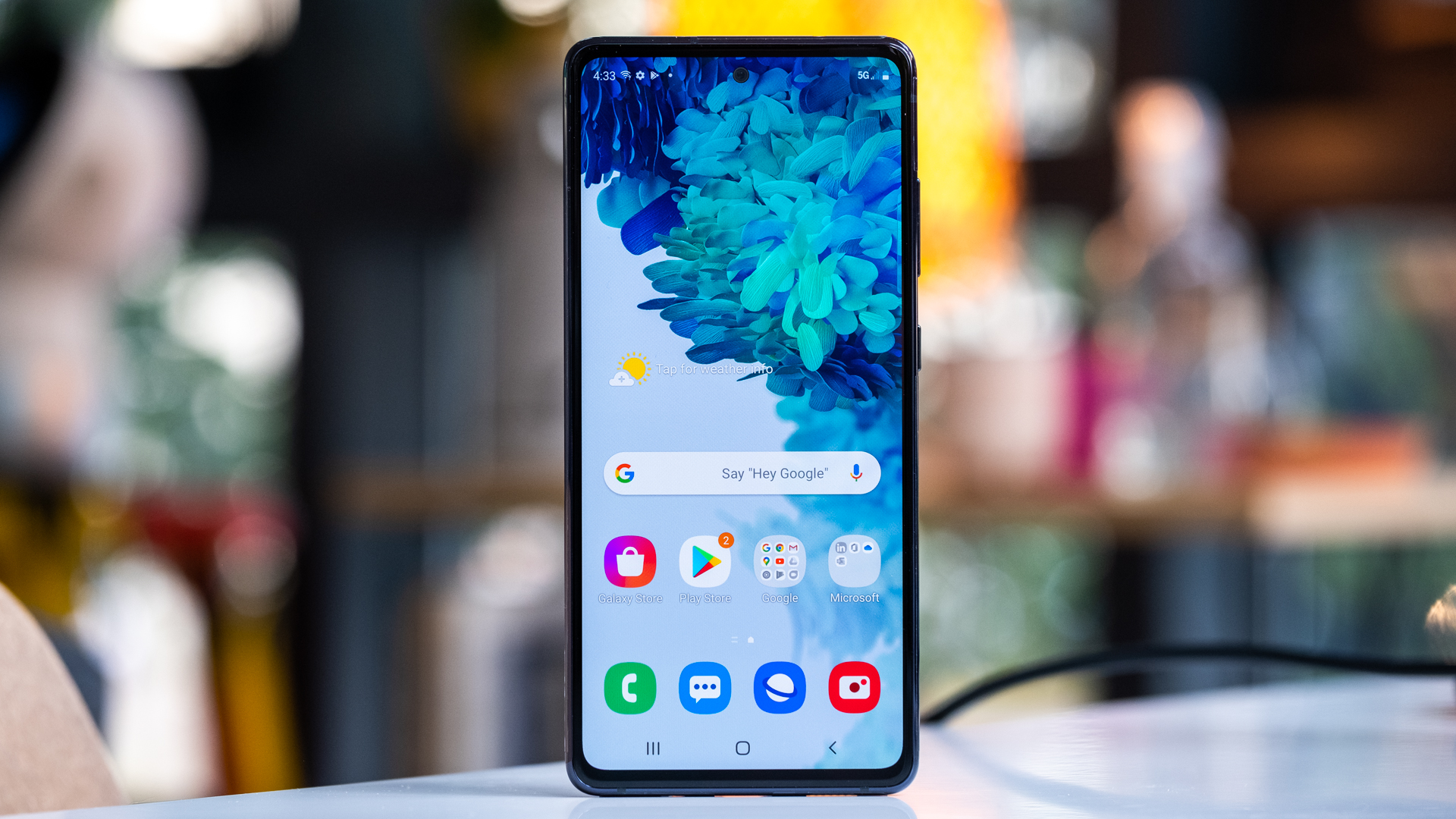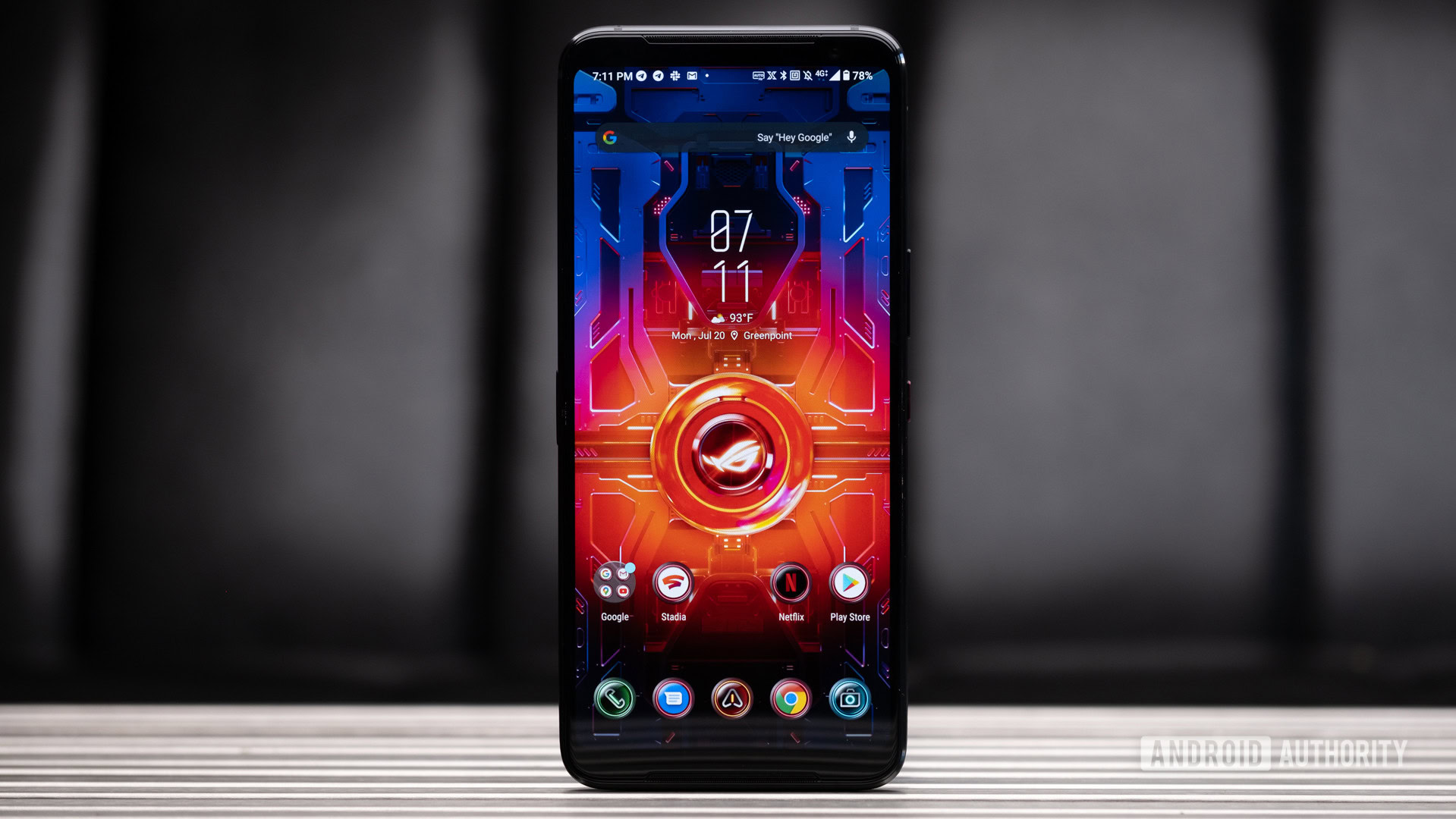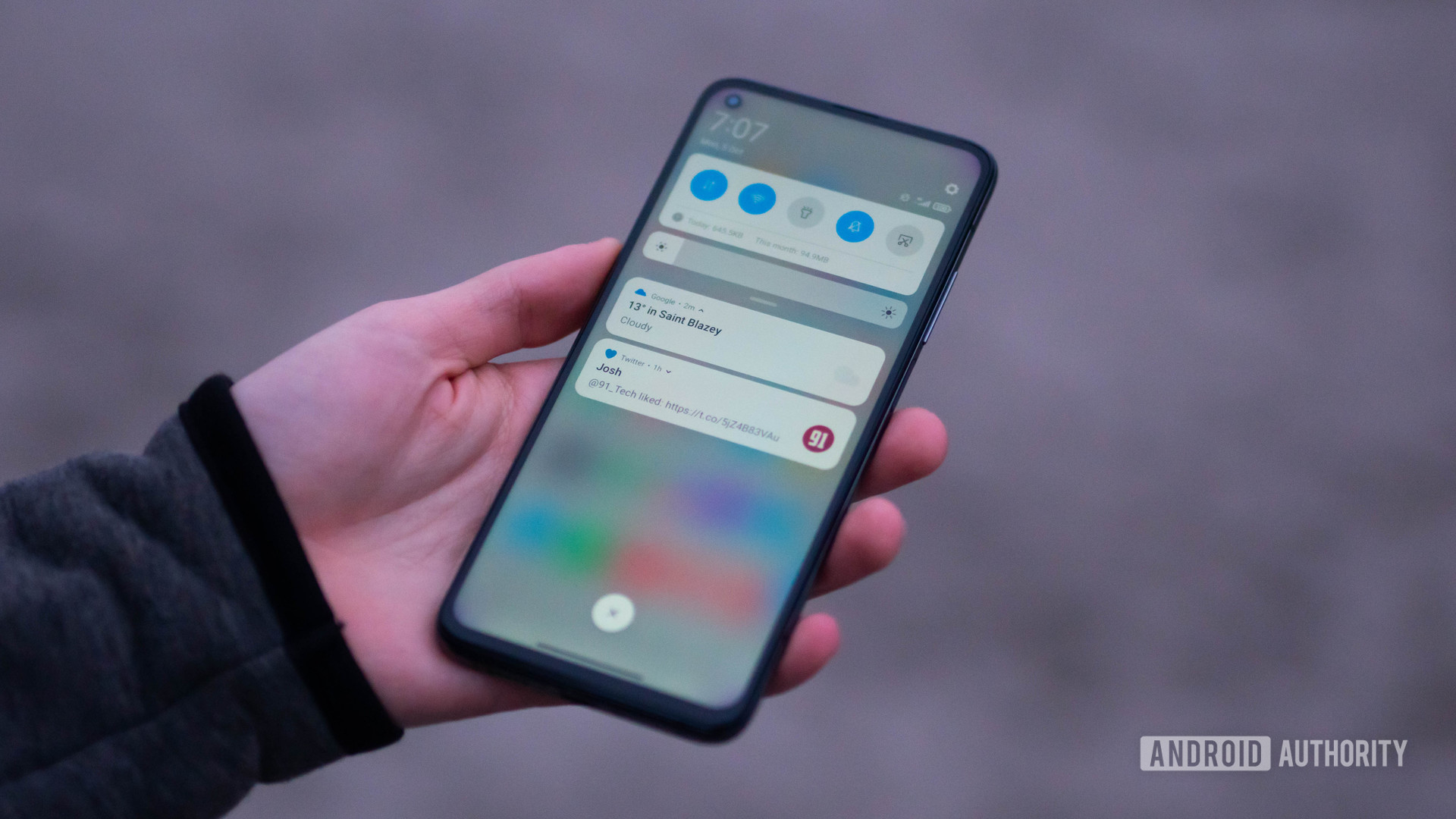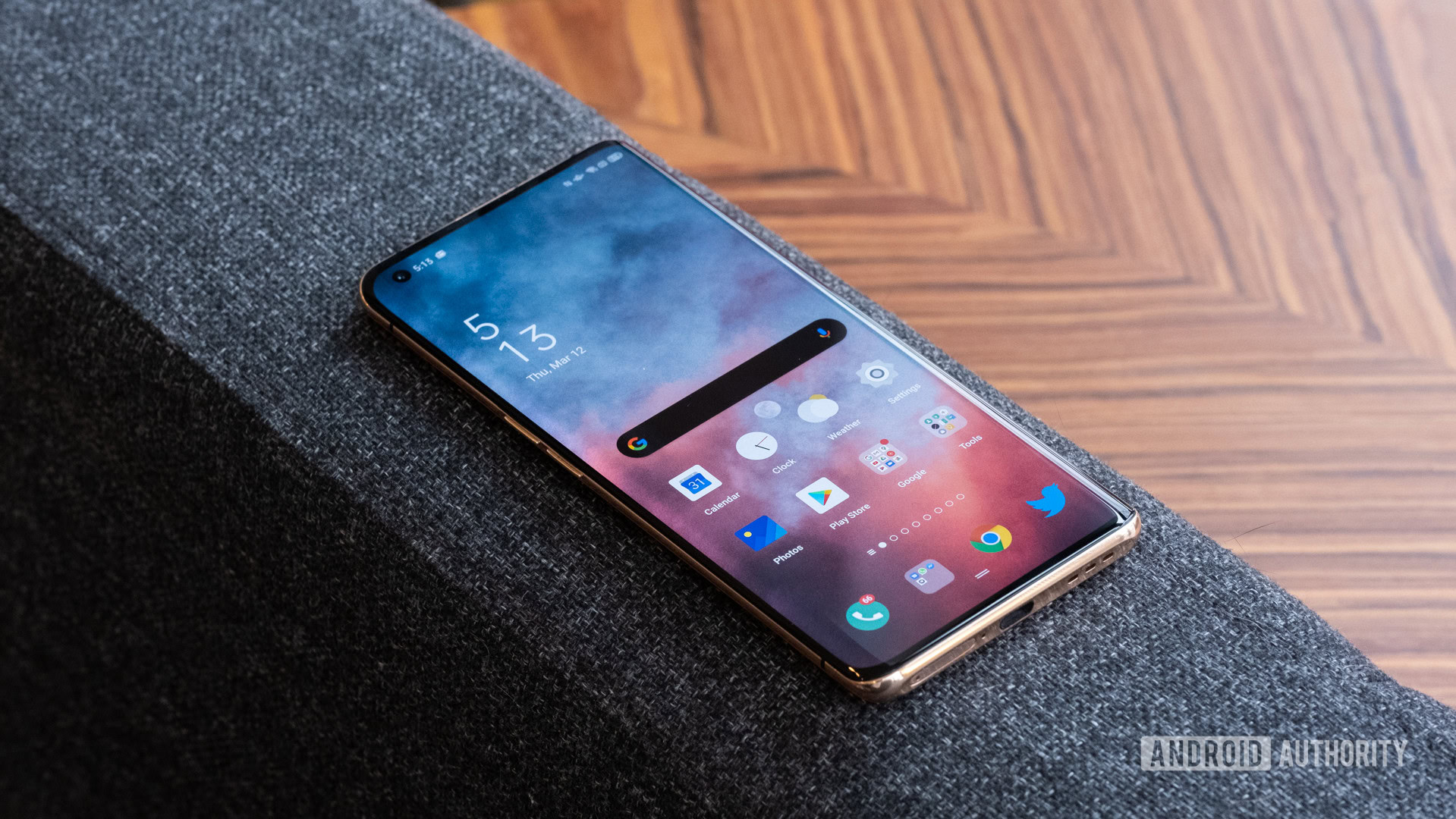Affiliate links on Android Authority may earn us a commission. Learn more.
High refresh rates exploded in 2020, but you need to look beyond the numbers

Smartphones with high refresh rate screens have been around for several years, dating back to 2017’s Razer Phone. However, 2020 was the year when high refresh rate displays became more than just a niche feature for gamers and enthusiasts.
From OnePlus and OPPO to Samsung and Xiaomi, it seems like most of the industry has embraced the feature on their flagship phones. In fact, it’s easier to count those that haven’t adopted it in their top phones, such as LG.
Don’t miss: Refresh rate explained: What does 60Hz, 90Hz, or 120Hz mean?
It’s not just flagships though. The year has also seen high refresh rate screens come to mid-range phones, with the likes of OnePlus, OPPO, realme, and Xiaomi all offering devices with the technology for under $300. This may sound like a great deal, but there’s way more to a great high refresh rate screen than simply supporting it.
A high refresh rate screen also requires plenty of GPU power while playing games. Pairing a high refresh rate screen with a lackluster processor can be a recipe for disappointment.
High refresh rate displays vs gaming benchmarks
We used GFXBench testing to figure out just how close various phones get to their target refresh rate, with these tests giving you a good idea of what to expect in graphically advanced games. It’s worth pointing out that the maximum supported refresh rate for each phone can vary wildly. For example, the ROG Phone 3 packs a 144Hz screen, while the entry-level OnePlus Nord N100 offers a 90Hz panel. In any event, by looking at how close the benchmarks are to the phone’s maximum refresh rate, we get a good idea of whether power is the constraining factor.
The Manhattan and T-Rex benchmarks show that there’s a major gap between flagship phones with high refresh rates and low-end phones with the tech. We obviously expected a gap, but even older flagship devices crush today’s mid-range phones in this regard.
More specifically, the Pixel 5 and OnePlus Nord — both equipped with the Snapdragon 765G chipset — fail to actually deliver more than 60fps in GFXBench’s testing. The same holds true for the OnePlus Nord N10, featuring a Snapdragon 690 processor. Meanwhile, the OnePlus Nord N100, which is powered by a lower mid-range Snapdragon 460 chipset, wasn’t even able to hold 40fps in these benchmarks. This is noteworthy because all of the mentioned devices sport 90Hz displays, yet none of them are coming close to this figure.
There's a massive gap between flagship and mid-range phones, let alone flagship and low-end devices.
The POCO X3 also tops out at 60fps, despite offering a 120Hz display and therefore being theoretically capable of hitting 120fps. However, the POCO device has a Snapdragon 732G processor, which is weaker on paper than the Snapdragon 765G.
We do suspect that some phones tested here used benchmark whitelisting, better cooling, or more polished software optimization to gain these results though. After all, the POCO X3 manages to outperform the Google phone despite having a less impressive SoC in theory.
Nevertheless, you can definitely see a significant gap between the flagships from this year and even 2019 compared to the mid-range and budget offerings from 2020.
Why is this the case?
The simple truth is that there’s still a major gap in graphical power between flagship processors and mid-range or low-end silicon. That isn’t to say that we haven’t seen progress from vendors such as Arm and Qualcomm in the sub-flagship space. Nevertheless, it does suggest that GPUs in this space have been somewhat neglected compared to the premium tier.
This is one of the reasons why we were hoping to see Qualcomm deliver a Snapdragon 888 Lite processor at its Snapdragon Summit earlier this month. It could’ve potentially narrowed that gap in a big way. Still, we’d love to see Qualcomm release a beefed-up Snapdragon 700 series product that approaches parity with the previous year’s flagship silicon.
What does this mean for real-world usage?

Benchmarks only tell part of the story though. It’s a different matter when actually using a mid-range or entry-level phone with a high refresh rate panel. In terms of everyday usage, we praised the Google Pixel 5, OnePlus Nord, and OnePlus Nord N10 for offering a smooth experience in general.
Our own David Imel noted that he didn’t notice any performance issues or slowdown for the Pixel 5, while adding that the 90Hz screen made everything feel smooth. Meanwhile, fellow reviewer Ryan Thomas-Shaw felt that the OnePlus Nord’s 90Hz panel was “integral to its speedy user experience,” adding that it was “smooth and responsive.”
Eric Zeman echoed the sentiments for the Nord N10, though its weaker sibling didn’t fare quite so well. Ryan noted in his review of the Nord N100 that the phone’s Snapdragon 460 “struggles” to hit 60fps at times, nevermind its target of 90fps.
What about actual gaming performance though? After all, that’s where higher frames per second really make a difference. Well, that really depends on the games you’ll be playing.
See also: The best Android phones you can buy
Our reviewers generally noted that 2D and low-end 3D games will run fine on these phones. But a common theme in their reviews was that advanced 3D games showed performance dips on mid-range devices. Ryan noted that these titles actually struggled on the low-end OnePlus Nord N100.
This performance goes some way towards explaining the bizarre situation when OnePlus went back and forth on whether or not the N100 actually supported 90Hz at all. “Actual refresh rate depends on settings, applications used, and processing limitations,” the company told us when we enquired about the display. In other words, the firm is acutely aware that horsepower can be a concern above standard refresh rates.
Benchmark scores shouldn’t be taken as gospel when buying a mid-range phone with a high refresh rate then. It’s clear the tech can enable a smooth everyday experience and bring the goods in lightweight games. However, it’s another story when it comes to low-end phones with the feature. Those hoping for a smooth high refresh rate experience may be left disappointed.
What to expect from high refresh rate phones in 2021?

There’s been a clear progression at the flagship tier when it comes to refresh rate performance on paper. Stable 120Hz or 144Hz performance is possible thanks to the Snapdragon 855 and 865 series. So, we’re expecting next year’s high-end phones to continue this trend of delivering smooth and stable support for high refresh rates — especially those powered by the Snapdragon 888.
Another minor trend we saw in 2020 was the introduction of variable refresh rate displays. It seems like a foregone conclusion that more brands will adopt it next year. This tech opens the door for a more power-efficient experience, as the high refresh rate screen can adopt refresh rates as low as 20Hz or even 10Hz when viewing photos, pages, and other static content.
Increased stability and variable refresh rates will hopefully become the norm in 2021.
There’s plenty of room for improvement in the mid-tier too. It’ll definitely be a space to watch in 2021. The brand-new Samsung Exynos 1080 in particular points to mid-range Samsung phones with graphical power broadly equivalent to the Exynos 990 seen in Galaxy S20 and Note 20 series variants. This new processor sports a Mali-G78 MP10 GPU compared to the Exynos 990’s Mali-G77 MP11 graphics.
Silicon designer Arm has also touted the new Mali-G68 GPU. The company is positioning it between the mid-range Mali-G5x GPU and the high-end Mali-G7x graphics. Fortunately, the Mali-G68 shares some core features with the Mali-G78, suggesting that mid-range phones with this “sub-premium” GPU could get a significant upgrade.
Refresh rate is only one factor

It also bears noting that a phone’s refresh rate isn’t the be-all-and-end-all of smartphone display quality. There are plenty of other factors that help determine quality. In fact, we’d argue that the display type is far more important these days.
The OLED vs LCD debate has been going on for years now, with the former offering deeper blacks and improved power consumption. Meanwhile, LCD screens are cheaper and aren’t as susceptible to screen burn-in over time. However, the battle has swayed heavily in OLED’s favor in recent years, as more companies manufacture these screens and tackle screen burn-in.
We actually asked Android Authority readers earlier this year whether they’d choose a high refresh rate LCD panel or a 60Hz OLED screen. Over 70% of respondents voted in favor of a 60Hz OLED panel, showing that many voters value OLED screens more than a high refresh rate.
Read more: AMOLED vs LCD — The differences explained
Color support is another important factor for screen quality. This is especially true with brands like Apple and OPPO moving in this direction with deeper 10-bit color support. In fact, brands like OPPO noted that they’ll be offering 10-bit HEIF capture along with the ability to display these captures in all their 10-bit glory on the phone’s display. So expect improved color capture and display on next year’s phones.
It’s also worth noting that some people can’t actually tell the difference between standard 60Hz and high refresh rates. Display types and color support/HDR will be even more important for these consumers.
High refresh rates will continue to be important in 2021, but it's only one piece of the puzzle.
That’s not to say high refresh rate screens aren’t significant or will be less important in 2021 compared to 2020. We’re fully expecting more phones to embrace it across price segments. It’s only one piece of the puzzle when it comes to delivering great display quality though, and it’s clear the technology requires a corresponding boost in power to work effectively across a range of scenarios.
So, before you get duped by claims of super-duper high refresh rate phones, you might want to take a peek under the hood. After all, what’s the point of getting a 144Hz phone if it struggles to maintain performance at standard refresh rates and you can’t tell the difference anyway?